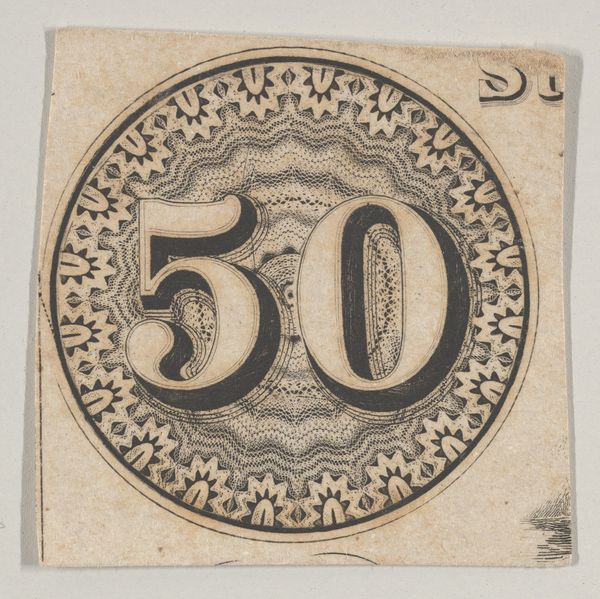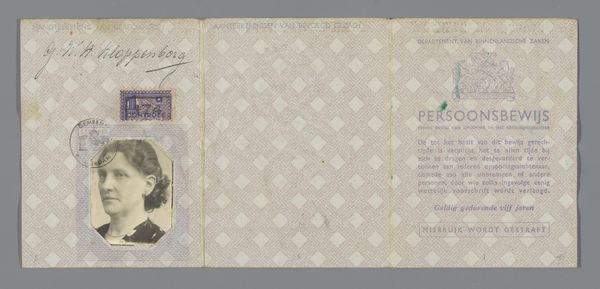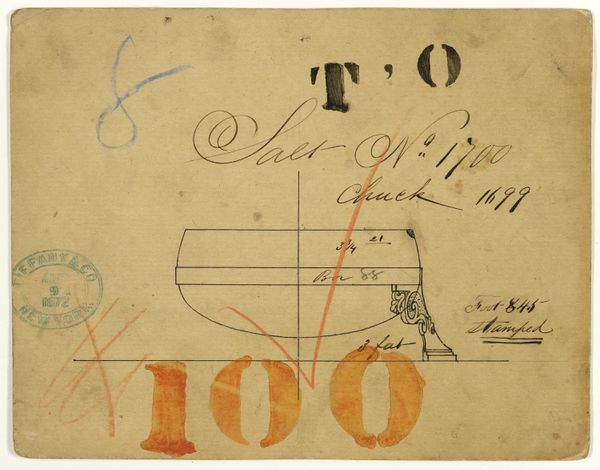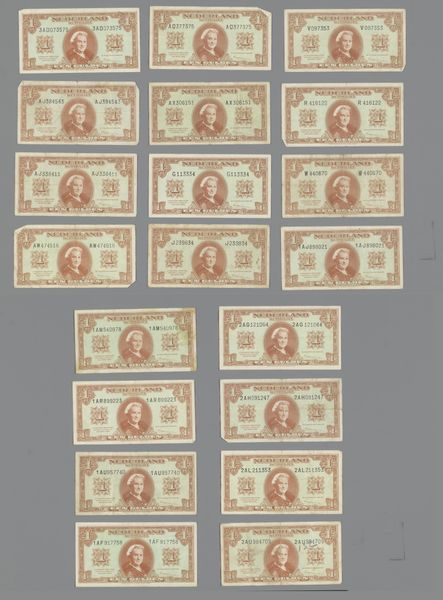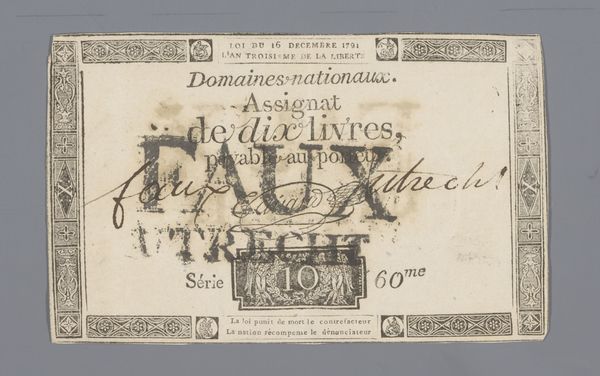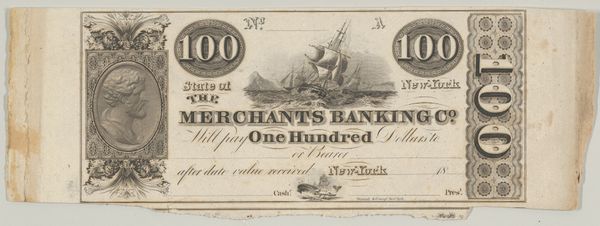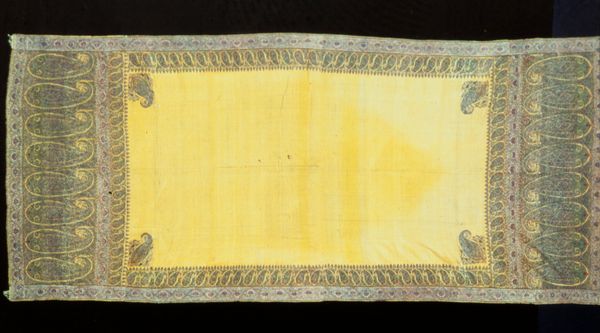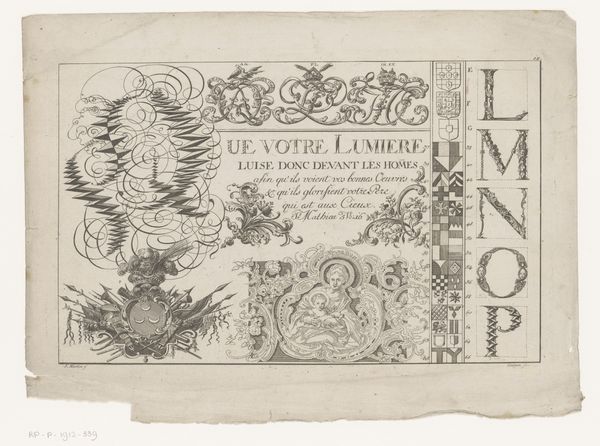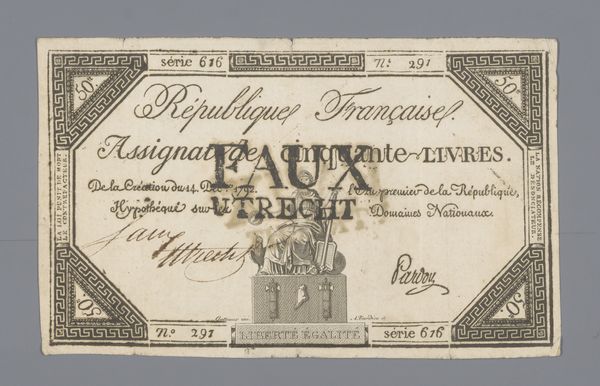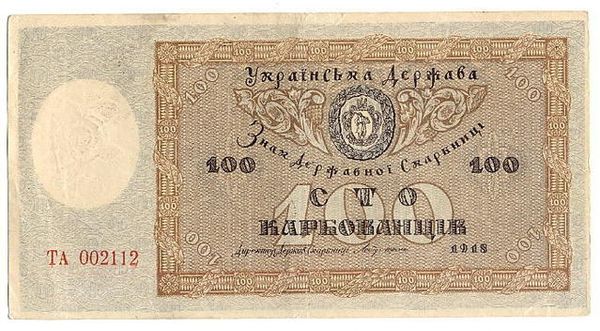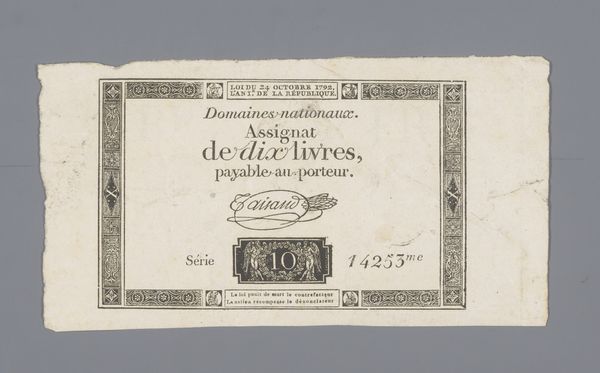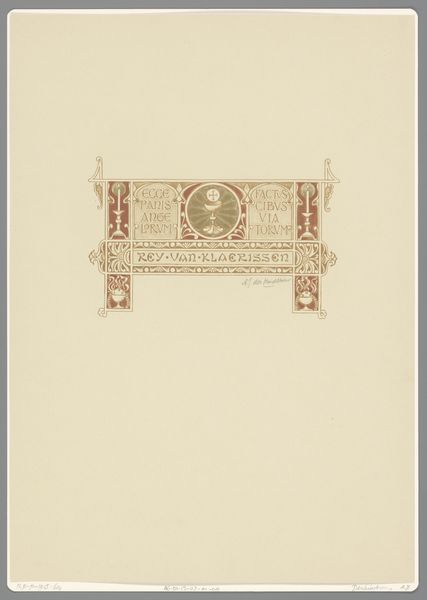
Banknote motif: the number 100 against an ornamental lathe work oval resembling woven rope with a border of grain, flowers and berries 1819 - 1847
0:00
0:00
drawing, graphic-art, print, paper, engraving
#
drawing
#
graphic-art
# print
#
paper
#
geometric
#
line
#
engraving
Dimensions: sheet: 1 3/8 x 1 9/16 in. (3.5 x 4 cm)
Copyright: Public Domain
Curator: Here we have a fascinating piece of graphic art, "Banknote motif: the number 100 against an ornamental lathe work oval resembling woven rope with a border of grain, flowers and berries," crafted sometime between 1819 and 1847 by Cyrus Durand. It's an engraving, likely intended for use on currency. Editor: It gives off a feeling of austere opulence, if that makes any sense. The rigid geometry of the lathe work contrasting with the almost hyper-realistic depiction of grain and berries... It feels almost... calculated. Curator: Durand was known for his meticulous work and contributions to anti-counterfeiting measures. He clearly uses these elements as more than mere decoration, though. Editor: Absolutely. The "100" is centrally placed and dominating. Numbers often have potent symbolic associations. One hundred represents completion, a full cycle. But, given its intended use on currency, the imagery takes on layers of meaning relating to ideas of wealth, harvest, prosperity... Curator: Note also the visual dichotomy in the ornamental surround: the ordered pattern created by the lathe work contrasts starkly with the organic and somewhat chaotic depiction of agriculture. It highlights both the mechanization and labor that contribute to the generation of wealth. Editor: Good point! And consider the context; the 19th century was a time of massive economic transformation, right? These symbols—grain, flowers, berries—weren’t just decoration. They referenced an agrarian ideal at a time of increasing industrialization. It evokes trust via established means while simultaneously asserting economic growth. Curator: Indeed, by interlacing familiar organic symbols with geometric pattern and machine-made perfection, the design bridges a conceptual gap between traditional, localized economies and nascent industrialized ones. Editor: So, this isn't simply a decorative element on a banknote but rather a carefully constructed argument! Durand’s art cleverly negotiates these cultural anxieties, embedding value not just in the numeral, but in the reassuring symbolism surrounding it. Curator: Precisely! It forces one to contemplate the deeper underpinnings of our economy, and what we decide is worth protecting. Editor: Yes, examining those tensions really opens up this piece beyond just aesthetic consideration. It’s quite powerful.
Comments
No comments
Be the first to comment and join the conversation on the ultimate creative platform.
